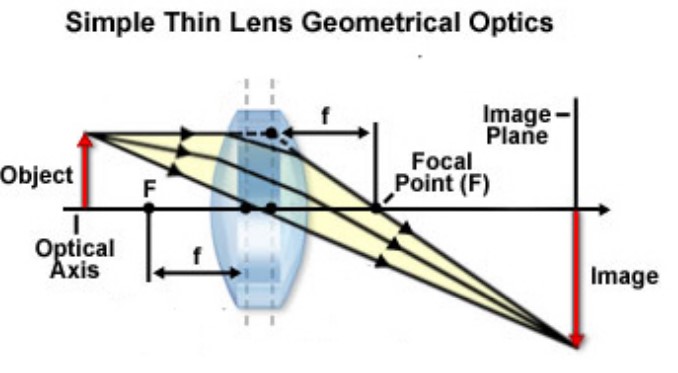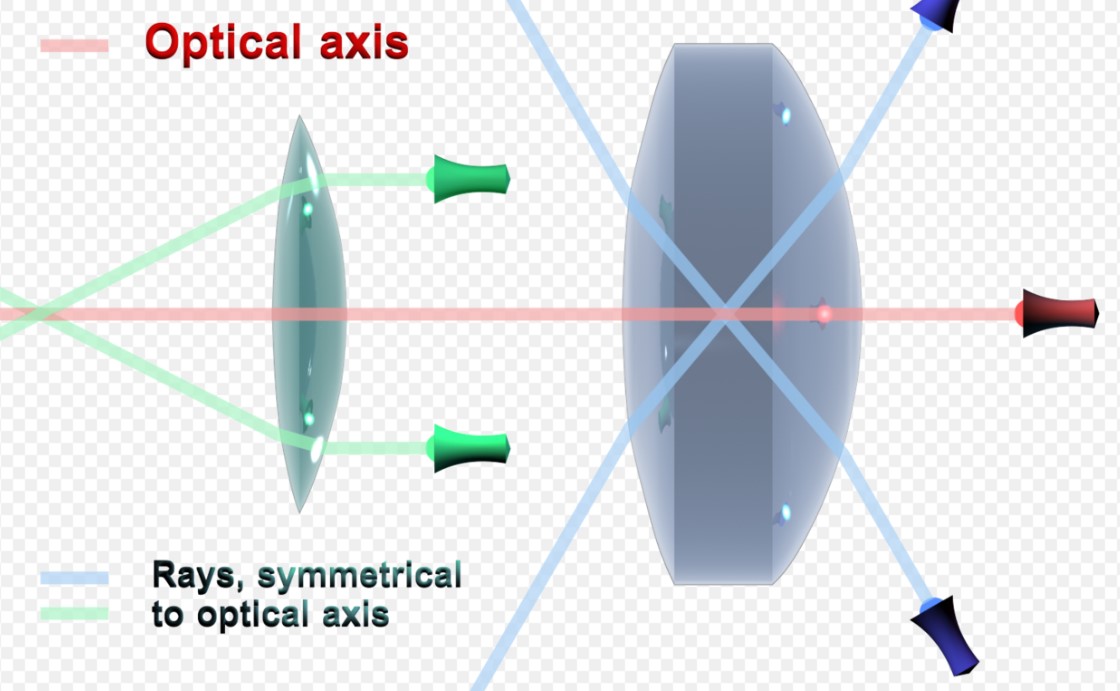2.5 Geometrical Optics

Figure 2.17: Convergence and Divergence of Light in a Lens
The above figure depicts collimated light: light whose rays are parallel to one another and do not converge or diverge.
Light in geometrical optics are also reversable as a result of this.

Figure 2.18: Key Concepts in Geometrical Optics
The above figurre highlights several important terms on geometrical optics:
Ideal lens
This is just a flat lens that can be put onto a uniformly thin disk.
Optical axis

Figure 2.19: Demonstration of an Optical Axis
This is the line where there is some rotational symmetry.
Focal point
This is the point at which light rays meet each other after reflection or refraction. In a convex system, there are two focal points.
Focal length
This is the distance between the center of a lens and the focal point.
2.5.1 Real versus Virtual Images

Figure 2.20: A Real versus Virtual Image Demonstration
| Real.Images | Virtual.Images |
|---|---|
| Light rays converge or intersect (note how the object is beyond the focal point; the object can be bigger or smaller) | Light rays diverge, but backwards extension may converge |
| Inverted and at the opposite side of the object | Upright and at the same side (and size) of the object |
| Can be detected by a screen, a film, or a CCD | Can only be seen by human eyes |